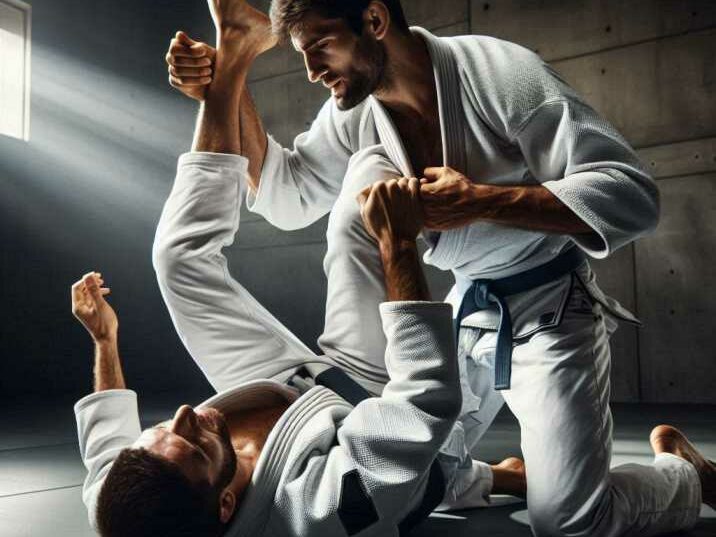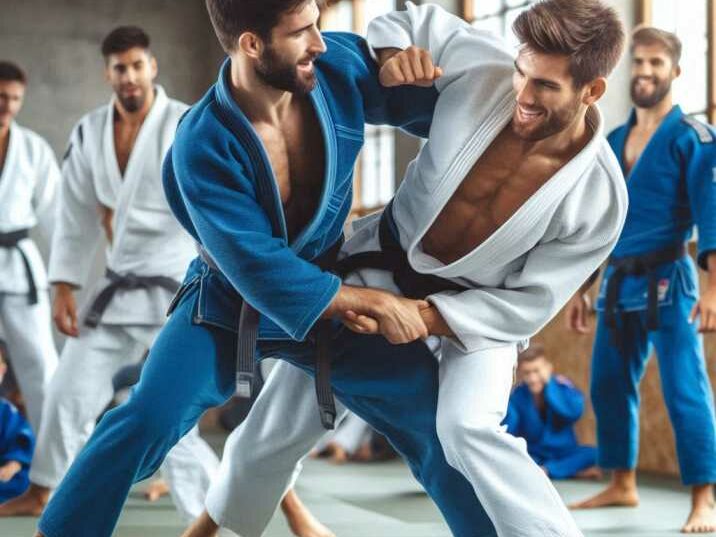Introduction
Table of Contents
Brazilian Jiu-Jitsu (BJJ) and Judo are two popular martial arts that share many similarities but also have distinct differences. Both focus on grappling, but BJJ emphasizes ground fighting, while Judo is known for its spectacular throws. A common question that often arises is: Can you use judo throws in BJJ? In this article, we will explore this topic in detail, discussing how judo throws can be integrated into BJJ practice, their benefits, and some practical applications.
Table of Contents
- Understanding Brazilian Jiu-Jitsu (BJJ)
- What is Judo?
- Similarities and Differences Between BJJ and Judo
- Integrating Judo Throws in BJJ
- Benefits of Using Judo Throws in BJJ
- Popular Judo Throws Used in BJJ
- Practical Tips for BJJ Practitioners
- Conclusion
- FAQs
Understanding Brazilian Jiu-Jitsu (BJJ)
Brazilian Jiu-Jitsu (BJJ) is a martial art that emphasizes ground fighting and submission techniques. Originating from the early 20th century, BJJ evolved from traditional Japanese Jiu-Jitsu and Judo. The Gracie family in Brazil played a significant role in developing and popularizing BJJ worldwide.
Key Concepts in BJJ
- Positioning: BJJ focuses on controlling the opponent through superior positioning. The primary positions include the guard, mount, side control, and back control.
- Submissions: The ultimate goal in BJJ is to make the opponent submit using joint locks (e.g., armbar, kimura) and chokeholds (e.g., rear-naked choke, triangle choke).
- Escapes: Learning how to escape from bad positions is crucial in BJJ. Techniques include shrimping, bridging, and rolling.
- Sweeps: Sweeps are techniques used to reverse positions, moving from a defensive to an offensive position.
Key Points:
- Focuses on ground fighting: Emphasizes control and submissions on the ground.
- Uses joint locks and chokeholds: Aims to make the opponent submit.
- Effective for self-defense and competition: Applicable in real-life scenarios and sports competitions.
What is Judo?
Judo is a Japanese martial art founded by Jigoro Kano in 1882. It focuses on throws and takedowns, aiming to throw the opponent to the ground with force and control. Judo also includes ground techniques (known as ne-waza), but its primary emphasis is on standing techniques (known as tachi-waza).
Key Concepts in Judo
- Throws (Nage-Waza): Throws are the core of Judo, with techniques like hip throws (e.g., O Goshi), leg sweeps (e.g., Osoto Gari), and shoulder throws (e.g., Seoi Nage).
- Pins (Osaekomi-Waza): Techniques to pin the opponent on their back, such as Kesa Gatame.
- Joint Locks (Kansetsu-Waza): Techniques that manipulate joints, primarily the elbow, such as Juji Gatame.
- Chokeholds (Shime-Waza): Techniques that constrict the opponent’s airway or blood flow, like Hadaka Jime.
Key Points:
- Emphasizes throws and takedowns: Known for spectacular throws.
- Aims to throw opponents with force and control: Focus on technique and leverage.
- Also includes ground fighting techniques: Complements BJJ’s ground focus.
Similarities and Differences Between BJJ and Judo
While both BJJ and Judo share a common heritage, they have distinct approaches and techniques.
Similarities
- Grappling Focus: Both arts focus on grappling, with an emphasis on controlling the opponent.
- Complementary Techniques: Techniques from Judo can enhance BJJ practice and vice versa.
- Self-Defense and Sport: Both are effective for self-defense and have competitive sports formats.
Differences
- Primary Focus: BJJ emphasizes ground fighting and submissions, while Judo focuses on throws and takedowns.
- Competition Rules: BJJ competitions focus on positional control and submissions, whereas Judo competitions emphasize throws and pins.
- Training Approach: BJJ training often starts on the ground, while Judo training typically begins with standing techniques.
Integrating Judo Throws in BJJ
Benefits of Using Judo Throws in BJJ
- Improved Takedown Skills: Integrating judo throws helps BJJ practitioners develop effective takedown techniques, which are crucial for initiating ground control.
- Versatility: Judo throws add a new dimension to a BJJ practitioner’s arsenal, making them adaptable in various situations, including self-defense and competitions.
- Surprise Element: Many BJJ competitors focus on ground techniques, so using judo throws can catch opponents off guard and provide a strategic advantage.
Popular Judo Throws Used in BJJ
- Osoto Gari (Major Outer Reap): This throw involves reaping the opponent’s leg out from under them while pulling them down with the upper body. It’s effective for its simplicity and power.

- Seoi Nage (Shoulder Throw): This dynamic throw involves turning your back to the opponent and throwing them over your shoulder. It’s a high-impact move that can decisively change the course of a match.
- Uchi Mata (Inner Thigh Throw): This throw uses the inner thigh to lift and throw the opponent, making it versatile and effective against various types of opponents.
- Harai Goshi (Sweeping Hip Throw): This technique combines a sweeping motion with the hips to throw the opponent, using leverage and body mechanics for a powerful takedown.
Important Keywords:
- Judo throws in BJJ
- BJJ takedown skills
- Osoto Gari in BJJ
- Seoi Nage in BJJ
- Uchi Mata in BJJ
Practical Tips for BJJ Practitioners
- Practice Regularly: Consistent practice is essential for mastering judo throws. Repetition helps develop muscle memory and improves execution.
- Work with a Partner: Practicing with a partner allows you to understand the mechanics and timing of the throws, providing real-time feedback.
- Focus on Technique: Proper technique is crucial for safety and effectiveness. Pay attention to details like grip, balance, and leverage.
- Adapt to BJJ Rules: Understand how judo throws can be adapted to fit BJJ competition scenarios and rules. For instance, ensure that the throws transition smoothly into ground control positions.
Table of Information
| Technique | Description | Benefits |
|---|---|---|
| Osoto Gari | Sweeping opponent’s leg | Powerful takedown |
| Seoi Nage | Throwing opponent over the shoulder | Dynamic and effective |
| Uchi Mata | Lifting with inner thigh | Versatile and surprising |
| Harai Goshi | Sweeping hip throw | Combines hip and leg movements |
Conclusion
Incorporating judo throws in BJJ can significantly enhance a practitioner’s skill set. By mastering these throws, BJJ practitioners can become more versatile and effective, both in self-defense and competitive scenarios. Whether you’re a beginner or an experienced practitioner, integrating judo throws into your BJJ training can elevate your game to new heights.

FAQs
Can you use judo throws in BJJ competitions?
Yes, many judo throws are legal and effective in BJJ competitions.
Which judo throw is most commonly used in BJJ?
Osoto Gari and Seoi Nage are among the most popular judo throws used in BJJ.
Do I need to learn Judo to use its throws in BJJ?
While formal Judo training can be beneficial, many BJJ schools teach judo throws as part of their curriculum.
Are judo throws safe to practice in BJJ?
Yes, with proper technique and supervision, judo throws can be safely practiced in BJJ.
Can judo throws help in self-defense?
Absolutely, judo throws can be highly effective in self-defense situations by quickly neutralizing an opponent.


